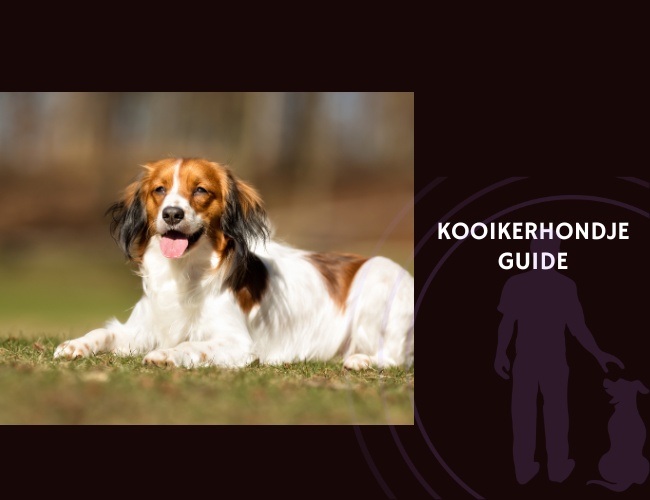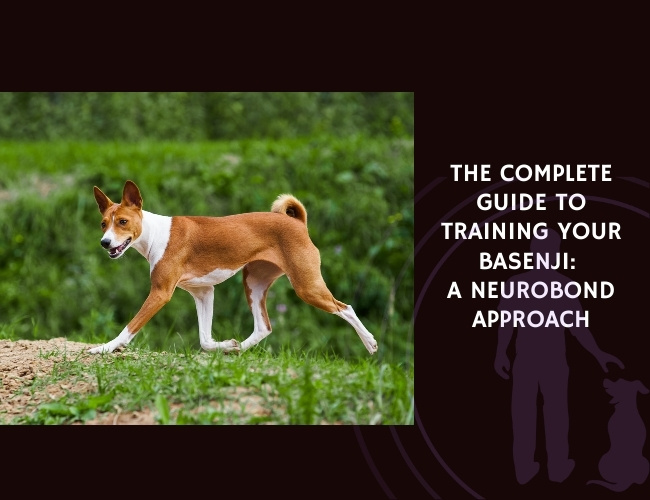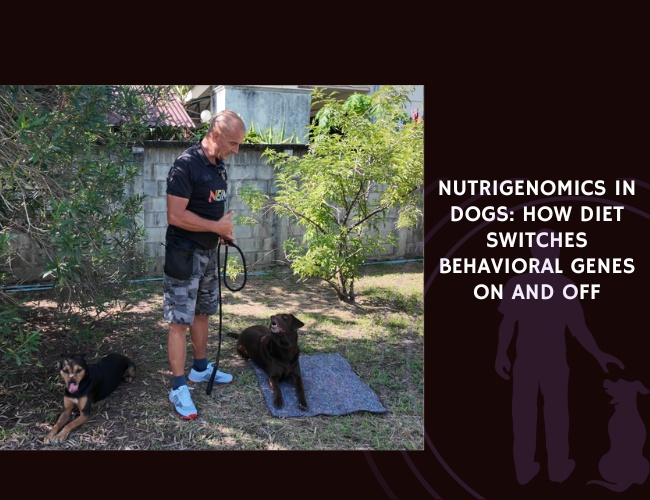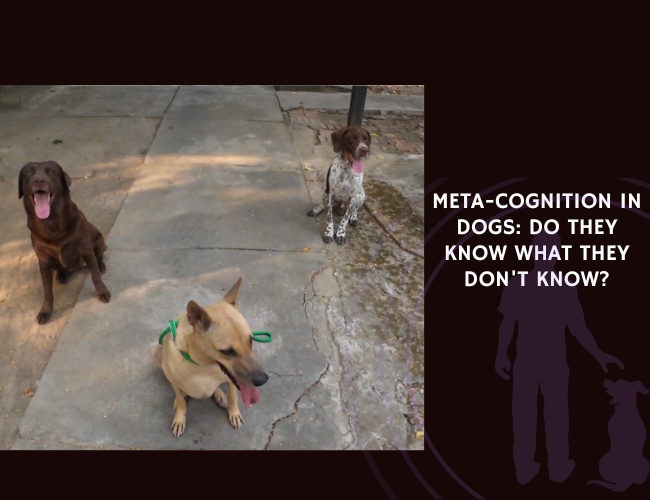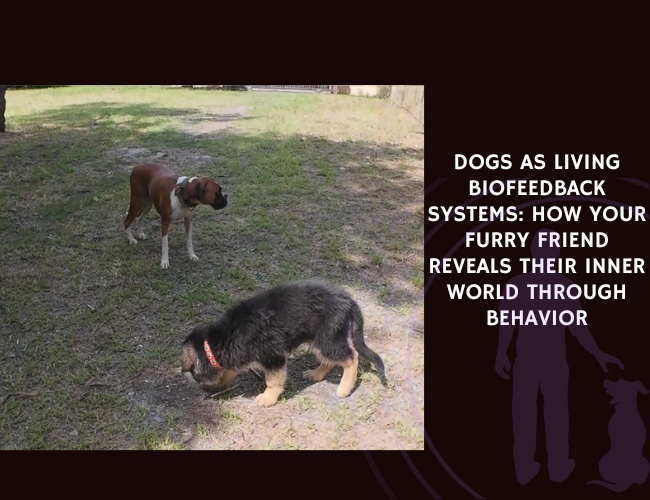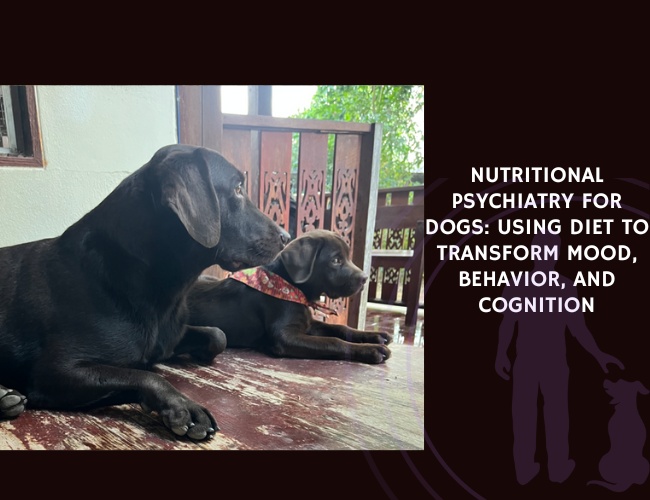Introduction
Picture a cheerful orange-and-white dog dancing through the reeds of a Dutch waterway, its plumed tail waving like a flag to lure curious ducks into carefully placed traps. This enchanting scene captures the essence of the Kooikerhondje—a breed whose very name tells a story of centuries-old partnership between human and canine. The “little cager dog” (as their name translates) represents one of the Netherlands’ most treasured breeds, combining the playfulness of a companion with the sharp intelligence of a working dog.
Today’s Kooikerhondje may no longer spend their days in duck decoys, but they carry within them the same alert sensitivity, keen intelligence, and devoted loyalty that made them invaluable to Dutch hunters for over 400 years. If you’re considering welcoming one of these remarkable dogs into your life, you’re embarking on a journey with a breed that’s as complex as it is captivating. Let us guide you through understanding these sensitive souls who can transform from reserved watchdogs to playful family companions—all while maintaining their distinctive independent streak that speaks to their working heritage. 🧡
Character & Behavior
Understanding Your Kooikerhondje’s Core Personality
When you first meet a Kooikerhondje, you might notice their cheerful demeanor and almost spring-like energy—but there’s so much more beneath that silky orange and white coat. These dogs embody a fascinating paradox: they’re simultaneously outgoing with their families and reserved with the world at large.
The Sensitivity Spectrum Your Kooikerhondje experiences the world more intensely than many other breeds. This heightened sensitivity manifests in several ways:
- Auditory Awareness: Sudden loud noises can trigger stress responses that last beyond the initial startle
- Environmental Vigilance: They’re constantly scanning their surroundings, processing every change
- Emotional Attunement: They pick up on your moods with remarkable accuracy
This sensitivity isn’t a flaw—it’s the very trait that made them exceptional at their original job. Imagine needing to work quietly around easily spooked waterfowl while maintaining focus on complex tasks. That same awareness makes them excellent watchdogs and deeply intuitive companions, though it also means they need understanding handlers who recognize when the world becomes too overwhelming.
Developmental Journey Did you know that your bouncy, social Kooikerhondje puppy might transform into a more reserved adolescent? This shift typically occurs between 8-18 months and often catches new owners by surprise. It’s completely normal—your dog is developing the cautiousness that helped their ancestors survive and thrive. Full mental maturity doesn’t arrive until around 2-3 years, giving you plenty of time to shape their responses to the world through patient, positive experiences.
Human Bonds and Guardian Instincts
The depth of a Kooikerhondje’s loyalty can take your breath away. Once you’ve earned their trust—and yes, it must be earned—you have a friend for life who would choose your company over almost anything else.
Family Integration Patterns Within the family unit, these dogs shine as devoted companions who want to be involved in everything you do. Whether you’re gardening, working from home, or simply relaxing, your Kooikerhondje will position themselves where they can keep an eye on you. This isn’t clingy behavior—it’s their way of staying connected while maintaining their independence.
Stranger Wariness When visitors arrive, don’t expect your Kooikerhondje to rush forward with tail-wagging enthusiasm. Instead, they’ll likely observe from a distance, assessing the newcomer with those intelligent eyes. This reserved nature means:
- New people need patience and shouldn’t force interactions
- Trust-building happens on the dog’s timeline, not ours
- Once accepted, visitors become part of the “approved” circle
Natural Watchdog Abilities Their guarding instincts manifest as alertness rather than aggression. You’ll find your Kooikerhondje has an uncanny ability to distinguish between normal neighborhood activity and something genuinely unusual. They’ll alert you with a distinctive bark—not the excessive noise of an anxious dog, but purposeful communication that says, “You need to know about this.”
Canine Social Dynamics
Understanding how your Kooikerhondje interacts with other dogs requires appreciating their unique communication style and spatial needs.
Personal Space Requirements Despite their medium size, Kooikerhondjes need more personal space than you might expect. They’re not the type to enjoy boisterous play at dog parks or tolerate “rude” canine behavior. Think of them as the introverts of the dog world—they can enjoy social interactions but on their own terms and with proper introductions.
Communication Clarity These dogs don’t mince words (or barks) when setting boundaries. If another dog invades their space or displays poor manners, your Kooikerhondje will communicate their displeasure clearly through:
- Warning growls or air snaps
- Body blocking or turning away
- Quick corrections that rarely escalate if heeded
This direct communication style means they do best with similarly respectful dogs who understand social cues. Early socialization helps them develop appropriate responses, but their preference for controlled interactions remains throughout life. 🐾
Vocalization & Communication
Understanding How Your Kooikerhondje ‘Talks’
Living with a Kooikerhondje means learning to interpret a sophisticated vocabulary of sounds, each with distinct meaning and purpose. Unlike breeds that bark first and think later, these dogs use vocalization strategically—a trait inherited from ancestors who needed to work quietly around easily startled waterfowl.
The Alert Bark When your Kooikerhondje spots something unusual, you’ll hear their signature alert bark—typically a series of 2-3 sharp barks followed by attentive silence. They’re not trying to scare away the perceived threat; they’re simply informing you that something requires your attention. This measured approach to alerting makes them excellent watchdogs without the noise complaints that plague owners of more vocal breeds.
Emotional Vocalizations Beyond their watchdog duties, Kooikerhondjes express emotions through an endearing range of sounds:
- Happy grumbles: Low, rumbling sounds during belly rubs or greetings
- Excited whines: High-pitched but controlled sounds before walks or meals
- Conversational muttering: Soft vocalizations while interacting with favorite humans
Body Language Mastery Perhaps even more than vocalizations, your Kooikerhondje communicates volumes through body language. That beautiful plumed tail tells stories all its own—a relaxed wag shows contentment, while a stiff, high carriage signals alertness or uncertainty. Their expressive ears swivel like radar dishes, constantly gathering information and telegraphing their emotional state.
Training & Education
Cognitive Style and Learning Preferences
Training a Kooikerhondje requires understanding their unique cognitive style—they’re not just intelligent, they’re selectively intelligent. This means they quickly grasp what you’re teaching but equally quickly decide whether compliance serves their interests.
The Sensitivity Factor Remember that heightened sensitivity we discussed? It profoundly impacts training success. These dogs can literally shut down if faced with harsh corrections, raised voices, or handler frustration. Think of their sensitive nature as both a training challenge and an opportunity—when you get the approach right, they learn with remarkable speed and retention.
Positive Reinforcement Excellence Your Kooikerhondje thrives under positive reinforcement methods because:
- They’re naturally eager to please trusted handlers
- Food, play, and praise all serve as effective motivators
- Success builds confidence in sensitive dogs
- The joy of working together strengthens your bond
Keep training sessions short (5-10 minutes) but frequent. Their quick minds appreciate variety, so rotate between different exercises to maintain engagement. You might notice them “testing” learned behaviors—this isn’t defiance but rather their independent nature assessing whether rules still apply.
Early Socialization: Beyond the Basics
The socialization needs of a Kooikerhondje extend far beyond what satisfies most breeds. One puppy kindergarten class won’t cut it—these dogs need ongoing, carefully managed exposure throughout their critical developmental periods and beyond.
The Extended Timeline While many breeds complete primary socialization by 16 weeks, Kooikerhondjes benefit from intensive socialization efforts through their second year:
- 3-6 months: Critical window for positive experiences
- 6-12 months: Continued exposure prevents regression
- 12-24 months: Ongoing reinforcement during mental maturation
Quality Over Quantity Rather than overwhelming your puppy with countless new experiences, focus on positive, controlled interactions. A single negative experience during their sensitive periods can have lasting impacts, so prioritize:
- Calm, positive meetings with various people
- Controlled introductions to other animals
- Gradual exposure to different environments
- Building confidence through success
Environmental Habituation Your socialization checklist should include diverse sensory experiences. City sounds, rural settings, different flooring textures, various weather conditions—each new experience, when introduced positively, builds a more confident, adaptable adult dog.

Recall Challenges and Solutions
Teaching reliable recall to a breed with high prey drive and independent thinking requires strategy, patience, and realistic expectations.
The Independence Factor Kooikerhondjes were bred to work semi-autonomously, making decisions without constant human direction. This independence serves them well in many contexts but complicates off-leash reliability. They’re not being stubborn when they pause to consider your recall command—they’re weighing options like their ancestors did when working the duck decoys.
Building Reliable Response Success comes through:
- Starting recall training in low-distraction environments
- Using incredibly high-value rewards (think freeze-dried liver, not regular kibble)
- Playing recall games that make coming to you the best option
- Never calling them for something they perceive as negative
- Accepting that 100% reliability may remain elusive
Many Kooikerhondje owners find long lines (15-30 feet) provide a good compromise, allowing exploration while maintaining control. This tool lets your dog practice recall with real-world distractions while ensuring safety.
Focus and Engagement Strategies
Maintaining your Kooikerhondje’s focus requires understanding their environmental awareness and working with, not against, their vigilant nature.
Environmental Management Initial training should occur in quiet, familiar spaces where your dog feels secure. As they master skills, gradually introduce distractions. This systematic approach prevents overwhelming their sensitive nature while building confidence.
Engagement Building Create training games that tap into their natural abilities:
- Scent work exercises engage their hunting heritage
- Trick training satisfies their problem-solving desires
- Short, varied sessions prevent boredom
- Interactive toys provide mental stimulation between training
Remember: an engaged Kooikerhondje is a happy Kooikerhondje. When you see that intense focus and tail-wagging enthusiasm, you know you’ve found the right balance. 🧡
Performance & Activities
Channeling Natural Abilities into Modern Activities
Your Kooikerhondje’s ancestors spent centuries perfecting the art of luring and retrieving—skills that translate beautifully into contemporary dog sports and activities. Understanding how to channel these innate abilities gives your dog the mental and physical stimulation they crave.
Agility: The Perfect Match Watch a Kooikerhondje navigate an agility course, and you’ll see centuries of athletic development in action. Their moderate size, nimble movement, and problem-solving abilities make them natural agility competitors. The sport offers:
- Physical exercise that matches their energy levels
- Mental challenges that engage their quick minds
- Bonding opportunities through teamwork
- Controlled environment that suits their sensitivity
Start with foundation exercises at home—simple jumps, tunnels made from chairs and blankets, and basic directional commands. Their eagerness to work with you will quickly become apparent.
Scent Work: Awakening Ancient Skills Perhaps no activity speaks to the Kooikerhondje’s heritage quite like scent work. Those sensitive noses that once detected hidden ducks now excel at finding hidden objects, making this an ideal activity for:
- Building confidence in cautious dogs
- Providing mental stimulation on rainy days
- Creating success for dogs of all ages
- Strengthening the human-canine partnership
Begin with simple “find it” games using treats, gradually progressing to searching for specific scents. You’ll be amazed at how naturally these skills emerge.
Water Activities: Heritage in Motion While not all Kooikerhondjes immediately take to water, many discover an affinity that echoes their wetland-working past. Introduce water gradually:
- Start with shallow, calm water
- Use floating toys to encourage exploration
- Never force interactions with water
- Let their curiosity guide the pace
Some develop into enthusiastic swimmers, while others prefer wading—respect your individual dog’s preferences while offering opportunities to explore.
Feathered. Focused. Fiercely Loyal.
Elegance with instinct.
The Kooikerhondje isn’t just a pretty face with orange ears and a plume of a tail. It’s a canine paradox—soft enough to cuddle, sharp enough to outwit a duck. That beauty? It works. That wariness? It protects.
Sensitivity that serves.
This breed doesn’t bark for fun. It alerts with purpose, listens with its whole body, and learns on a deeper bandwidth. Their independence is ancestral—born not from defiance, but from trust in their own judgment.
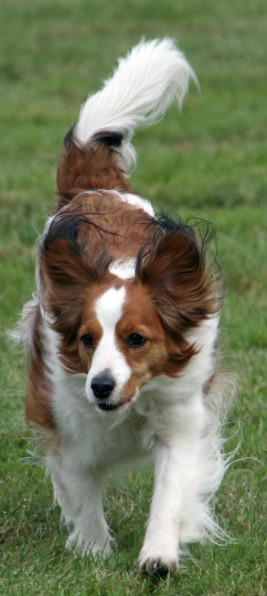
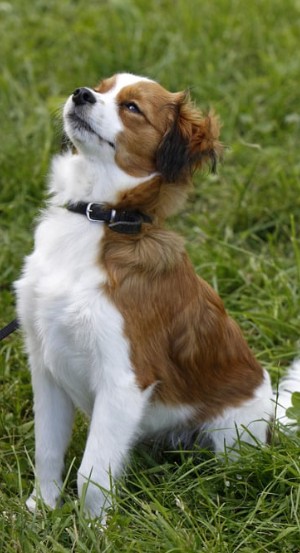
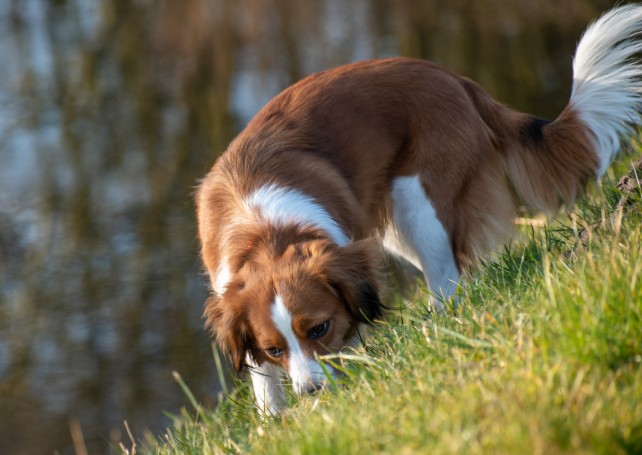
Partnership, not obedience.
To train a Kooikerhondje is to invite a dialogue. You don’t command—you earn alignment. With the right respect, this little Dutch decoy becomes more than a dog. It becomes your mirror. 🧡
Nutritional Recommendations
Optimizing Energy Through Nutrition
Feeding your Kooikerhondje isn’t just about filling a bowl—it’s about supporting their unique metabolic needs, maintaining their silky coat, and providing energy for their active minds and bodies.
Caloric Requirements and Meal Planning Adult Kooikerhondjes typically thrive on 600-900 calories daily, though individual needs vary based on:
- Activity level (working dogs need more than couch companions)
- Age (seniors often need fewer calories)
- Metabolism (some run “hotter” than others)
- Season (many need slightly more in winter)
Divide daily portions into two meals to prevent bloat and maintain steady energy. Some owners find their dogs do better with a larger morning meal when they’re most active.
Protein Power for Athletic Bodies Quality protein sources should comprise 25-30% of your Kooikerhondje’s diet. Their athletic build and active nature demand:
- High-quality animal proteins (chicken, fish, lamb)
- Variety to ensure complete amino acid profiles
- Easily digestible sources for sensitive stomachs
- Appropriate levels for life stage
Rotating protein sources can prevent food boredom—a real consideration with these intelligent dogs who appreciate variety in all aspects of life.
Managing Sensitivities and Optimizing Health
Many Kooikerhondjes inherit sensitive digestive systems along with their sensitive temperaments. This isn’t a weakness but rather another trait requiring informed management.
Common Dietary Sensitivities Watch for signs of food sensitivities, which may include:
- Chronic ear infections (often linked to food allergies)
- Excessive paw licking or skin irritation
- Digestive upset or irregular stools
- Changes in coat quality
Some dogs thrive on grain-free diets, while others do well with high-quality grains. The key lies in observing your individual dog and working with your veterinarian to find the optimal diet.
Transitioning Foods Successfully When changing foods, remember your Kooikerhondje’s sensitivity extends to their digestive system:
- Plan 10-14 day transitions (longer than typical recommendations)
- Mix increasing amounts of new food with decreasing amounts of old
- Monitor stool quality throughout the transition
- Keep a food diary to track responses
Supporting Coat and Joint Health That beautiful orange and white coat requires nutritional support from within:
- Omega-3 fatty acids: Fish oil supplements support coat shine and reduce inflammation
- Biotin and zinc: Essential for coat health and skin integrity
- Glucosamine/chondroitin: Preventive joint support for active dogs
- Antioxidants: Support overall health and aging gracefully
Food as Training Currency
Your Kooikerhondje’s food motivation can become your secret training weapon—if used wisely.
Strategic Treat Usage Rather than free-feeding, consider using portions of daily meals for training:
- Morning kibble becomes recall practice rewards
- Evening portions reward calm behavior during dinner prep
- Special treats reserved for challenging training scenarios
This approach prevents overfeeding while maximizing training opportunities throughout the day.
Individual Preferences Some Kooikerhondjes are highly food-motivated, while others prefer play or praise. Discover what makes your dog’s tail wag most enthusiastically:
- Test different treat values in various situations
- Note preferences changes with age or seasons
- Adjust rewards based on difficulty of requested behavior
- Remember that variety maintains interest

Health Concerns
Understanding Breed-Specific Health Considerations
The Kooikerhondje community has worked diligently to address hereditary health concerns through careful breeding and genetic testing. Understanding these conditions—even if your dog never experiences them—helps you provide optimal preventive care.
Hereditary Necrotising Myelopathy (ENM): A Success Story This devastating neurological condition once threatened the breed’s future. Thanks to dedicated breeders and available DNA testing since 2012, ENM has been virtually eliminated from breeding populations. The story serves as a reminder of why choosing responsible breeders matters:
- All breeding dogs should be tested
- Carriers can be safely bred to clear dogs
- Affected puppies are now extremely rare
- Ask for test results when choosing a breeder
Von Willebrand Disease Type III: Another Victory This severe bleeding disorder, identified in the breed in the 1990s, has also been largely eliminated through testing and careful breeding. The success demonstrates how genetic testing protects future generations:
- Simple DNA test identifies carriers
- Responsible breeding prevents affected puppies
- Pre-surgical testing still recommended
- Knowledge empowers better health decisions
Patellar Luxation: Ongoing Vigilance Unlike the genetic conditions above, patellar luxation remains a concern requiring ongoing attention:
- Regular veterinary examinations can detect early signs
- Maintaining proper weight reduces stress on joints
- Appropriate exercise during growth periods matters
- Surgical correction possible if needed
About 15% of Kooikerhondjes show mild forms that don’t impact quality of life, but monitoring remains important.
Polymyositis: Emerging Awareness This inflammatory muscle disease appears with increasing frequency in the breed, prompting ongoing research:
- Early symptoms include exercise intolerance and muscle weakness
- Prompt diagnosis improves treatment outcomes
- Immunosuppressive therapy often helps
- Genetic component suspected but not yet identified
Stay informed about emerging research and maintain open communication with your veterinarian about any concerning symptoms.
Preventive Care Strategies
Proactive health management gives your Kooikerhondje the best chance at a long, healthy life.
Regular Health Screening Beyond routine veterinary care, consider:
- Annual eye examinations (CERF/OFA certification)
- Orthopedic evaluations as your dog matures
- Blood panels to establish baseline values
- Dental health assessments
Environmental Health Factors Your Kooikerhondje’s sensitivity extends to environmental allergens:
- Monitor for seasonal allergy patterns
- Use hypoallergenic grooming products
- Maintain clean ear canals to prevent infections
- Consider air filters during high-pollen seasons
Early intervention prevents minor irritations from becoming chronic conditions requiring ongoing management. 🐾
Lifestyle & Environment
Creating the Ideal Living Situation
Kooikerhondjes adapt remarkably well to various living situations—provided their core needs for exercise, mental stimulation, and companionship are met. Let’s explore how to create an environment where your sensitive, intelligent companion can truly thrive.
Indoor Living Arrangements Despite their working heritage, Kooikerhondjes make excellent house dogs when their needs are satisfied. They generally prefer:
- A quiet space of their own for retreat
- Being near family activities without being underfoot
- Consistent household routines that provide security
- Moderate temperatures (their coat handles cold better than heat)
You might notice your Kooikerhondje selecting different resting spots throughout the day—perhaps a sunny patch in the morning, a cool corner in the afternoon, and close to the family during evening activities. This behavior reflects their environmental awareness and desire to optimize comfort.
Outdoor Requirements While they don’t need acreage to be happy, Kooikerhondjes do require:
- Secure fencing (they can be escape artists when motivated)
- Safe spaces to explore and investigate
- Protection from extreme weather
- Opportunities for supervised off-leash time
Many owners find their Kooikerhondjes enjoy “patrolling” the yard, checking perimeters and noting any changes—behavior that echoes their watchdog heritage.
Exercise and Mental Stimulation Balance
The key to a content Kooikerhondje lies not in exhausting physical exercise but in balancing physical and mental challenges.
Daily Exercise Requirements Plan for 1-2 hours of activity daily, divided into:
- Morning walk or training session (30-45 minutes)
- Afternoon mental stimulation or play (20-30 minutes)
- Evening walk or calm activity (30-45 minutes)
Remember, a tired Kooikerhondje isn’t necessarily a good Kooikerhondje—an overstimulated dog may become more reactive, not less.
Mental Workout Ideas Keep that brilliant mind engaged through:
- Puzzle feeders that make mealtime challenging
- Hide-and-seek games with favorite toys
- Training new tricks (they can learn dozens!)
- Scent work exercises around the house
- Interactive toys that dispense rewards
Rotating activities prevents boredom while building different skills. You’ll quickly learn which challenges your dog prefers—some love puzzle toys while others prefer active training games.
Family Dynamics and Daily Routines
Integrating a Kooikerhondje into family life requires understanding their need for predictability alongside their playful nature.
Children and Kooikerhondjes These dogs can be wonderful family companions when matched with the right children:
- Older, calm children often become best friends
- Respectful interactions build trust
- Supervision ensures positive experiences
- Teaching children to read dog body language prevents issues
Very young or boisterous children may overwhelm a sensitive Kooikerhondje. Success comes from teaching both species appropriate interaction styles.
Multi-Pet Households With proper introductions, Kooikerhondjes can coexist peacefully with other pets:
- Slow introductions work better than rushed meetings
- Respect their need for personal space
- Cats require careful management due to prey drive
- Same-sex dog aggression occasionally occurs
Many Kooikerhondjes prefer being the only dog or living with one calm companion rather than in large packs.
Travel and Adaptability
Your Kooikerhondje’s adaptability extends to travel—with proper preparation.
Car Travel Training Start car training early:
- Short, positive trips to fun destinations
- Comfortable crate or harness for safety
- Gradual increase in journey length
- Regular breaks for sensitive stomachs
Many become excellent travel companions who eagerly hop in the car for adventures.
Vacation Considerations Whether bringing your dog or arranging care:
- Familiar routines help reduce stress
- Trusted pet sitters often work better than kennels
- Bring familiar bedding and toys
- Maintain feeding schedules when possible
Some Kooikerhondjes adjust quickly to new environments, while others need time to settle. Know your individual dog’s tolerance for change.
Senior Care
Aging Gracefully with Your Kooikerhondje
As your energetic companion enters their golden years (typically around 8-10 years), their needs shift while their devoted nature remains constant.
Physical Changes Senior Kooikerhondjes may experience:
- Decreased energy but maintained alertness
- Joint stiffness, especially in cold weather
- Changes in coat texture or color
- Slower recovery from exercise
Adjust expectations while maintaining quality of life through appropriate activity.
Cognitive Considerations Mental stimulation remains crucial:
- Shorter training sessions with familiar cues
- Gentle puzzle games that don’t frustrate
- Maintaining social interactions
- Consistent routines that provide security
Many seniors enjoy learning new tricks at a slower pace—proving you can teach an old dog new behaviors when approached correctly.
Health Monitoring Increased veterinary vigilance helps catch age-related issues early:
- Biannual check-ups instead of annual
- Blood panels to monitor organ function
- Dental care to prevent systemic issues
- Weight management to reduce joint stress
Your senior Kooikerhondje has given you years of devotion—now it’s time to return that care with extra attention to their changing needs. 🧡
Conclusion: Is the Kooikerhondje Right for You?
After exploring the depths of the Kooikerhondje personality, from their sensitive nature to their brilliant minds, you might be wondering if this is your perfect match. Let’s be honest—these aren’t dogs for everyone, and that’s exactly what makes them so special for the right people.
You might be a perfect Kooikerhondje person if you:
- Appreciate a dog who thinks before acting
- Have patience for building trust and relationships
- Enjoy training and mental challenges
- Want a devoted companion rather than a social butterfly
- Can provide consistent, positive leadership
- Value alertness without excessive barking
- Have time for daily exercise and engagement
Consider another breed if you:
- Want an immediately friendly, outgoing dog
- Have a chaotic, unpredictable household
- Prefer minimal training requirements
- Need a dog who loves everyone instantly
- Have very young, energetic children
- Want to frequent dog parks regularly
- Expect immediate off-leash reliability
The Kooikerhondje offers something rare in today’s dog world—a breed that maintains its working heritage while adapting beautifully to modern companionship. Their sensitivity, intelligence, and loyalty create bonds that run deeper than simple pet ownership. When matched with understanding owners who appreciate their complexity, these Dutch treasures provide a lifetime of devoted partnership, gentle humor, and intelligent companionship.
If you’re ready for the journey, if you can embrace both the challenges and rewards of living with a sensitive soul, then perhaps it’s time to welcome a Kooikerhondje into your life. Just remember—once you’ve earned the trust of these remarkable dogs, you’ll wonder how you ever lived without that gentle plumed tail wagging just for you. 🐾

